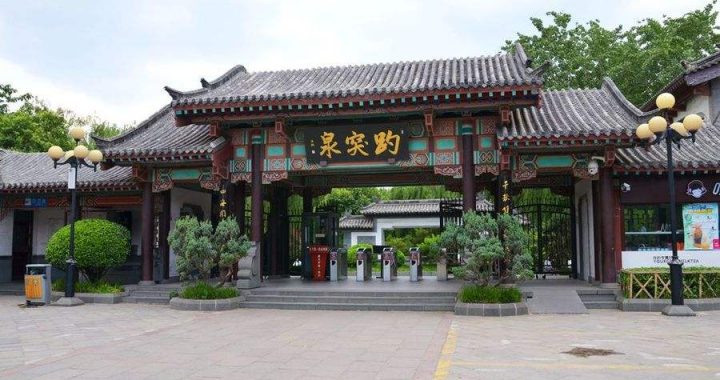Four Gates Pagoda
5 min readThe Four Gates Pagoda in Ji’ nan, Shandong province gets its name because there is a semicircular arched gate on all the four sides. It is thought to be the earliest and most intact stone pagoda extant in China. It is also the oldest one-storied pavilion-like stone pagoda.
The pagoda is made of dark green stones and is 15.04 meters high. It is one-storied in the shape of a square, each side is 7.4 meters long. The height is closeto the length of the cross section. There is a semicircular arched gate on all the four sides of the pagoda. The stones overlap on the eaves for five layers. Each layer is bigger than the one below, forming a caved curve sucking inwards. There is a square central pillar inside the pagoda. On each of the four sides,a sitting Buddha statue is located. These statues were moved here after the pagoda had been built and are well known as Four Statues of Buddha. The four statues are decent and quiet in gesture, vivid and peaceful in appearance, with hair worn highly in bun or coil and lines on the clothes simply and clearly carved. There used to be three statues on each side and twelve in total. But only the central one is left; others are destroyed.
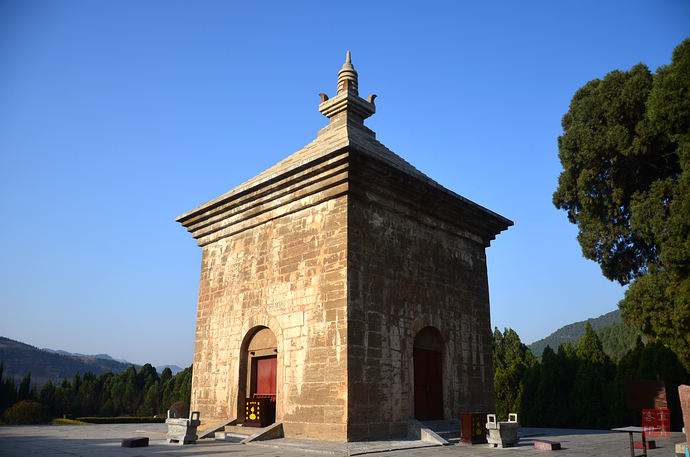
The tablet The Building of Statue by Yang Xianshu we see today on the Buddha statue of the south side is only a replica in imitation of the original one. The original edition has already been destroyed. The top of the pagoda is paved with 23 layers of green flagstones. The layers gather more and more tightly from the outer parts to the center, forming a four-pointed pyramidal roof. On the top of the pagoda is a stone pinnacle which is made up of dew-bearing plate, mountain flowers, palm leaves and Buddhist wheels. It is simple in outline, vivid in appearance and vigorous in shape, adding an interesting look to this uncomplicated pagoda. Besides, the pinnacle itself is a box-shaped pagoda of sutras with unique and intricate molding. The Four Gates Pagoda focuses much of its attention on the eave of linesand the balance of proportion. Therefore, it is of great art and aesthetic values.
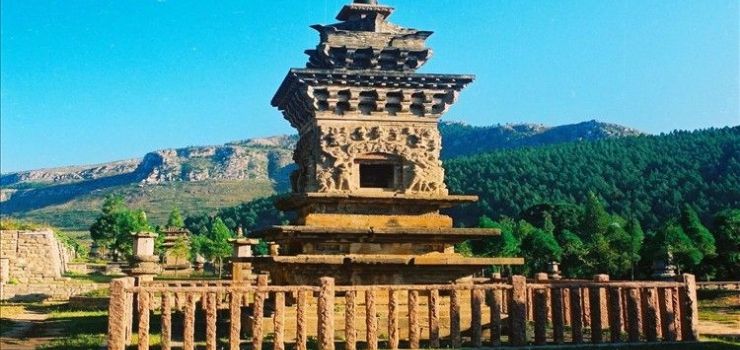
The concaved curve under the eaves and the smooth inwards-sucking line on the surface add softness to the sturdy stone pagoda. Although the gate is small, it is in perfect proportion with the precise size of the pagoda. The small gate leaves people a natural and graceful impression rather than narrow or restrained.
This weather-beaten Four Gates Pagoda is still in mysterious look up to today, leaving people puzzled.
Myth One: Where does the stone statue of Buddha come from?
Lack of relevant historical materials, there were many speculations before 1970s as to when this pagoda is built. In 1972, government allocated special fund for repairing the pagoda. During the reparation, the workers found on an arched flagstone within the top of pagoda several characters, saying “made in the 7th reigning year of Daye, Sui dynasty (611)”. There was also a box with sarira in it inthe central pillar of the pagoda. Several five-zhu-coins (an ancient unit of value) of the Sui dynasty were stored. From then on, people knew that this pagoda was built in 611. Although the construction time of the pagoda is clear, the origin place of the Buddhist statues around the central pillar still remains unknown. These intricate and vivid marble-made statues are of great art and aesthetic values. According to historical records, there used to be two tablets with the building information carved on them in the pagoda, one said that there were four statues made by Yang Xianshu in 544 and the other said there were five made by Buddhist nuns Wuwei, Miaofa, et al. However, these two tablets were lost before 1949. The tablet The Building of Statue by Yang Xianshu was stolen by a high officer in the late Qing dynasty and has not been found by far. It is in true a pity. In recent years, China’s leading architect Liang Sicheng and his wife had investigated on the spotand came up with the conclusion that the stone statues were likely to be built in the Sui dynasty just as the Four Gates Pagoda was. But this conclusion is not accepted by other experts. As time goes on, the construction time of the four statues becomes more complicated and confusing.
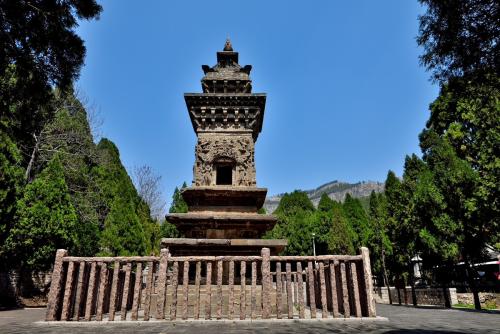
Myth Two: To whom does the sarira in the pagoda belongs?
The question that the sarira in the pagoda belongs to whom should not have become a myth. However, it puzzled many experts and scholars due to the carelessnessof the maintenance workers. They destroyed the important subsidiaries of the sarira during the reparation.
In 1972, government allocated money specialized for repairing the Four Gates Pagoda. The expert-in-chief happened to be out for some other things when the group was repairing the pillars. Just at that time, the maintenance workers found a mysterious case in the central stone pillar. They all gathered together curiously, wondering what was kept inside. But the expert was not back yet. What should they do? Wait for the expert or open it right now? The maintenance workers discussed for a moment and decided to open it right away.
The maintenance workers recalled that there was a bronze case covered with a piece of red silk fabric in the stone case. The bronze case was intricately made, exquisite and lovely. Inside it was a bead and a high-necked bottle, decorated withbronze rings and bone rings. When the expert came back, he was surprised to see thecase. These seemingly common things were actually sarira in a broad sense recorded in history. They were about to investigate further the origin of the sarira.
Pitifully, the red silk fabric on the cover was efflorescence and no useful details could be found any more. In this way, the origin of sarira becomes a myth.
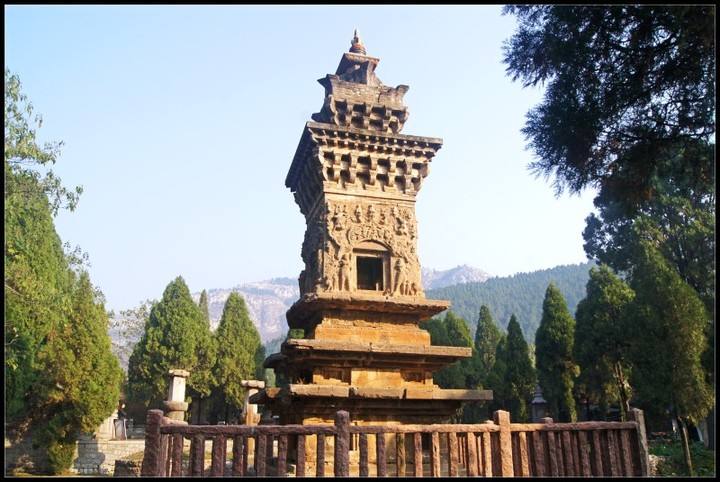
Thankfully,a high-necked bottle of the same type was found several years later in Dawenkou, Tai’ an, with bone sarira in it. Fourteen years later, another bottle with sarira in was found during the cleaning of the Famen Temple’s base in Shaanxi province. Why is there no sarira in the bottle found in the Four Gates Pagoda? Wheredo the visionary sarira in the bronze case come from? It is in truth a pity that we cannot answer these questions about the Four Gates Pagoda where sarira was first found in China.
